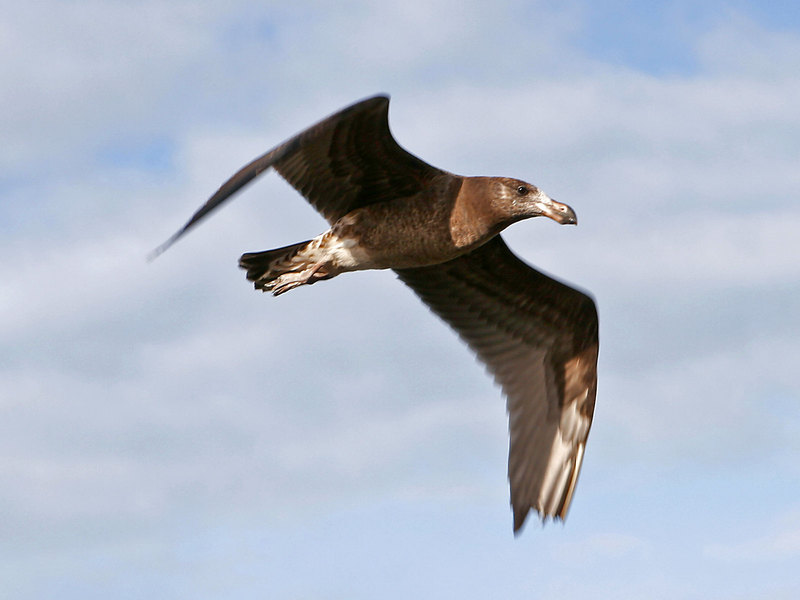| Comments |
|
| | Guest |
|
 |
Pacific Gull
Scientific name: Larus pacificus
Family: Laridae
Order: Charadriiformes
Featured Bird Groups
Sea birds
What does it look like?
Description
The Pacific Gull is a very large black-backed gull with a massive yellow bill, broadly tipped with scarlet. The upper wings and wingtips are wholly black with a narrow white inner trailing edge, the tail is white with a broad black band near the end. The legs are yellow to orange-yellow. Juvenile Pacific Gulls are mottled dark brown with pale face and the bill is pink with a black tip. The immatures have dark brown wings, whitish mottled body and a black-tipped yellow bill. There are two forms of the Pacific Gull: the eastern form (race pacificus) has a white eye and a complete red tip to the bill while the western form (race gergii) has a red eye and an incomplete red tip to the bill.
Similar species
The Pacific Gull can be confused with the Kelp Gull, Larus dominicanus, which has a much smaller bill, as well as being much smaller and less bulky.
Where does it live?
Distribution
The Pacific Gull is endemic to southern Australia and occurs mostly on south and west coasts, Tasmania and infrequently on the east coast.
Habitat
The Pacific Gull prefers sandy, or less often, rocky coasts and sandy beaches. In eastern Australia, the Pacific Gull prefers areas that are protected from ocean swells such as estuaries, bays and harbours. In Western Australia, it occurs occasionally in harbours but mostly on exposed coasts and offshore islands. It usually avoids human habitation but is occasionally seen on farmland and rubbish tips near the coast but rarely inland. It can be found roosting or loafing in elevated situations such as rocky headlands or on structures such as wharves and jetties.
Seasonal movements
The adult Pacific Gull is mainly sedentary while the young are dispersive.
What does it do?
Feeding
The Pacific Gull forages along the coasts between the high-water mark and shallow water on sandy beaches, feeding mainly on molluscs, fish, birds and other marine animals.
Breeding
The Pacific Gull breeds in scattered single pairs or small, loose colonies on high points on headlands or islands. Two types of nests are built: one a scrape or depression in the ground, either unlined or lined with small stones or gravel, the other is a neatly constructed shallow bowl made of sticks, grass, seaweed or feathers. Both sexes build the nest with the female doing most of the incubation while the male forages for food and stands guard near the nest.
Living with us
Living with humans
The Pacific Gull is easily disturbed by human activities at breeding sites and roosting areas, and have occasionally become entangled in fishing lines. However, they do scavenge on human refuse at rubbish tips, abattoirs, picnic areas and on fish scraps near wharves.
References
Pizzey, G. and Knight, F. 1997. Field Guide to the Birds of Australia. Angus and Robertson, Sydney.
Pringle, J.D. 1987. The Shorebirds of Australia. Angus and Robertson and the National Photographic Index of Australian Wildlife, Sydney.
Schodde, R. and Tideman, S.C. (eds) 1990. Reader's Digest Complete Book of Australian Birds (2nd Edition). Reader's Digest (Australia) Pty Ltd, Sydney.
Morcombe, M. 2000. Field guide to Australian Birds. Steve Parish Publishing.
Higgins, P.J. and S.J.J.F. Davies (eds) 1996. Handbook of Australian, New Zealand and Antarctic Birds, Volume 3 (Snipe to Pigeons). Oxford University Press, Victoria. |
|
|
